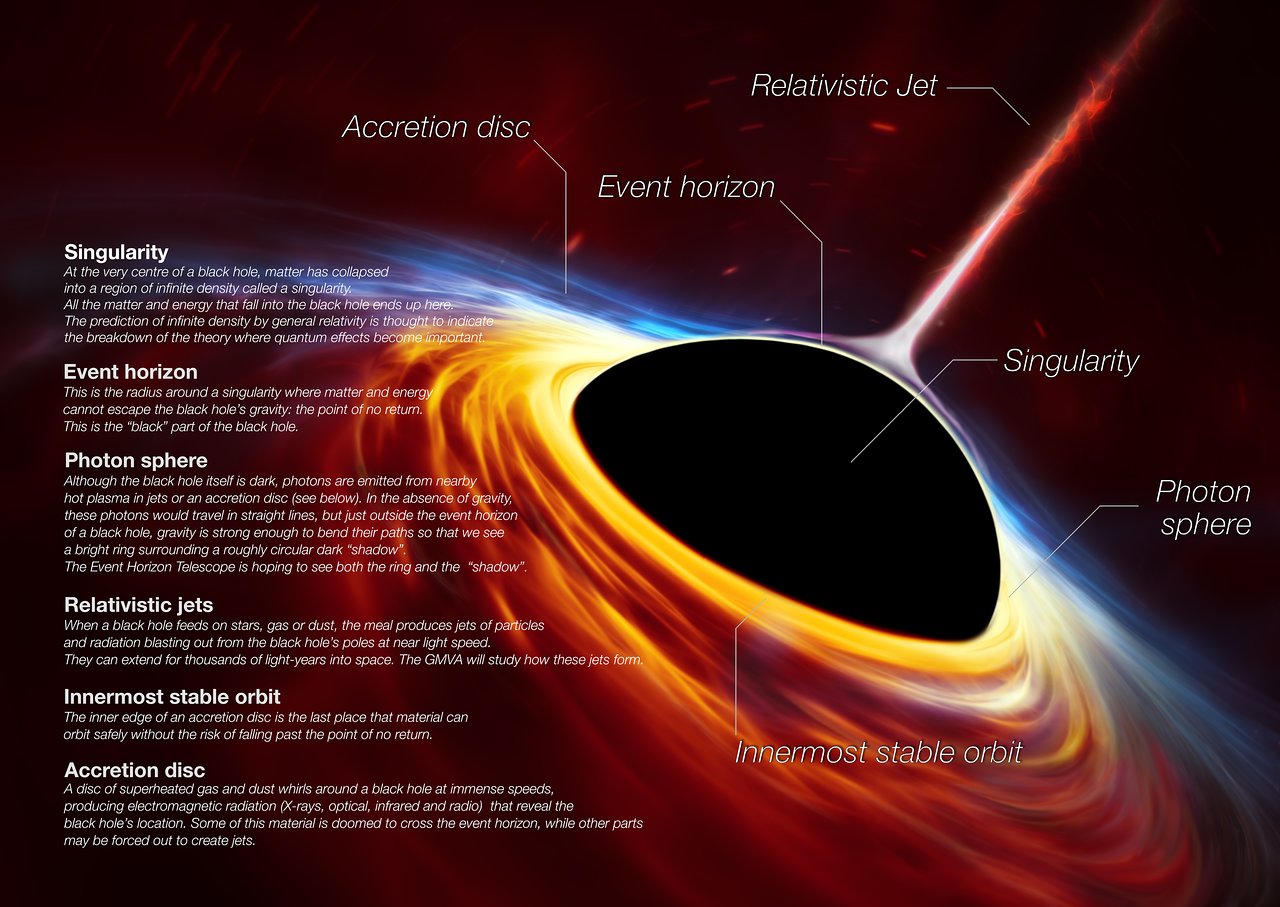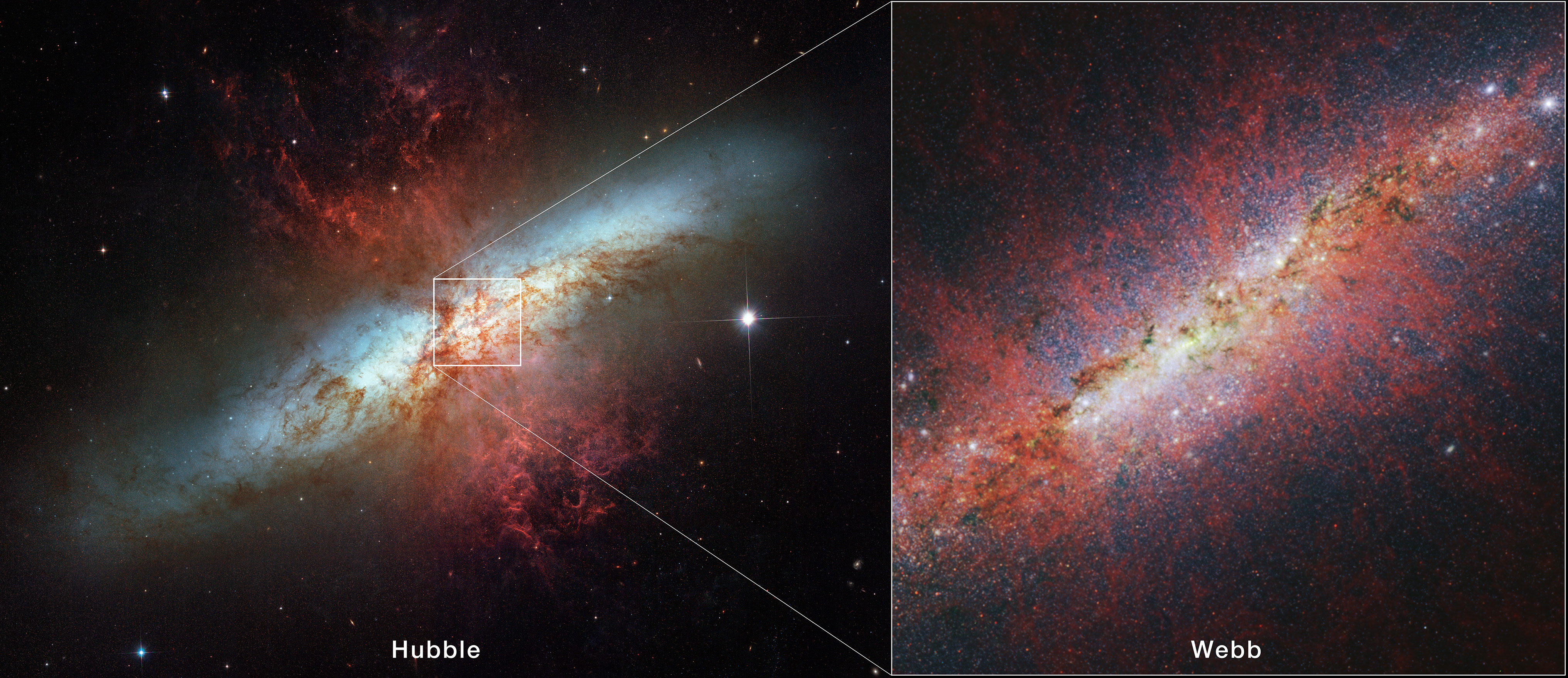
1. ONE OF THE BIGGEST SUPERMASSIVE BLACK HOLES
One of the biggest supermassive black holes known to us is in the quasar TON 618. This black hole has a mass approximately 66 billion times that of the Sun, making it one of the most massive black holes ever discovered. It’s located in a distant, bright celestial object known as a quasar. The light from TON 618 took more than 10 billion years to reach us, so we see it as it was when the universe was less than a quarter of its current age. The study of these celestial giants is still an active field of research, and new discoveries are being made regularly. Please note that these measurements are estimates and can vary based on the method of measurement used.
2. SUPERMASSIVE BLACK HOLE SEEDS IN THE EARLY UNIVERSE
Discovery of Heavy Black Hole "Seeds" in the Early Universe
Astronomers have made an exciting discovery - they have found the first signs of heavy black hole "seeds" in the early universe. These seeds could potentially hold the key to understanding how supermassive black holes, with masses millions or even billions of times greater than that of our sun, were able to form in less than 1 billion years after the Big Bang.
What are Heavy Black Hole Seeds?
Heavy black hole seeds are believed to be black holes with masses approximately 40 million times that of our sun. Unlike regular black holes that are created when massive stars collapse, these seeds are thought to form directly from the collapse of enormous gas clouds. Galaxies that are believed to contain these heavy black hole seeds are known as Outsize Black Hole Galaxies (OBGs).
The Research Findings
The team leading this research, headed by Akos Bogdán from the Center for Astrophysics Harvard & Smithsonian, made their discovery while studying a quasar using two powerful telescopes - the James Webb Space Telescope (JWST) and NASA's Chandra X-ray Observatory. During their investigation, they detected an object with a mass characteristic of black holes.
To validate their findings, the researchers compared their observations with simulations of the rapid growth of heavy black hole seeds. Remarkably, they found a strong correlation between the two, providing further evidence for the existence of these enigmatic objects.
Implications of the Discovery
If this discovery is confirmed, it could revolutionize our understanding of how supermassive black holes came into being. It suggests that some of the earliest black holes formed directly through gas collapse, bypassing any intermediate stages such as the birth and subsequent demise of massive stars.
This finding represents a significant milestone in unraveling the mysteries surrounding these cosmic behemoths and brings us one step closer to comprehending their origins.
3. SUPERMASSIVE BLACK HOLE MERGER CLOSE TO EARTH
Supermassive Black Holes: A Closer Look
Astronomers have made an exciting discovery - a pair of supermassive black holes that are closer to Earth than any others found before. These black holes are located in a galaxy called UGC 4211, which is approximately 500 million light-years away from us.
The Closest Pair of Black Holes
What makes these black holes even more remarkable is their proximity to each other. They are separated by a mere 750 light-years, making them the closest pair of black holes that scientists have been able to confirm through the measurement of multiple wavelengths of light.
Unprecedented Proximity and Potential
These two black holes, with masses estimated at 125 million and 200 million times that of the sun respectively, are growing side by side. Their unique position near Earth and each other presents an exceptional opportunity for studying significant aspects:
- Giant Black Hole Mergers: The closeness of these black holes increases the likelihood of them eventually merging. This event could provide invaluable insights into the process of merging giant black holes.
- Gravitational Waves: As these massive objects merge, they produce ripples in spacetime known as gravitational waves. These waves are notoriously difficult to detect but carry essential information about the nature of our universe.
Another Fascinating Discovery
In addition to this groundbreaking find, astronomers have also identified another pair of supermassive black holes named PKS 2131-021. However, these black holes are situated much farther away - approximately 9 billion light-years from Earth.
Unlike the close proximity of the UGC 4211 black holes, PKS 2131-021 has been gradually moving towards each other for around 100 million years. They now share a binary orbit, with the two black holes circling one another every two years or so. It is predicted that in about 10,000 years, these two black holes will merge, generating powerful gravitational waves that will ripple throughout the universe.
The Limitations of Measurement
It's important to note that the figures provided for the masses and distances of these black holes are estimates. The method used to measure them can introduce variations in the results. As technology advances and new techniques are developed, astronomers continue to refine their understanding of these celestial giants.
Ongoing Exploration
The study of supermassive black holes remains an active area of research, with new discoveries being made regularly. Through ongoing observation and analysis, scientists hope to uncover more secrets about these enigmatic cosmic entities and their role in shaping the universe.
4. ECHO OF SUPERMASSIVE BLACK HOLE'S MONSTROUS "BURP"
Astronomers have observed phenomena that can be described as “burps” from supermassive black holes. These burps are essentially outbursts of energy and matter that occur when a black hole consumes nearby material.
One notable example is the supermassive black hole in the galaxy SDSS J1354+1327 (or J1354, for short). This black hole has a history of “snacking” on material in its vicinity, then letting out “burps” of energy as a result. The team led by researchers at the University of Colorado Boulder identified two separate burps, or outflow events: one ancient burp on the verge of dissipating and one hinting at a much more recent meal.
Another example is the supermassive black hole in the small galaxy NGC 5195. This is one of the nearest supermassive black holes to Earth that is currently undergoing such violent outbursts. Astronomers detected two arcs of X-ray emission close to the center of NGC 5195, which they believe represent fossils from two enormous blasts when the black hole expelled material outward into the galaxy.
These burps are significant because they can alter the evolution of galaxies and can trigger the formation of new stars. The study of these celestial giants is still an active field of research, and new discoveries are being made regularly.
5. "MILLION-LIGHT-YEAR-LONG JEDI LIGHTSABER" FROM A BLACK HOLE
The term "Million-light-year-long Jedi lightsaber" is a vivid description used by astrophysicists to describe the colossal energy jets expelled by black holes. These jets are akin to lightsabers due to their long, straight, and concentrated nature.
A team of astrophysicists at Princeton University made an intriguing discovery that challenges conventional understanding of black holes. They found that black holes, often thought to be cosmic voids relentlessly consuming everything in their vicinity, can actually lose energy. This concept aligns with Einstein's theory of relativity but contradicts popular belief.
How Black Holes Lose Energy
The energy dynamics of black holes are fascinating. Like a spinning top that gradually slows down, a rotating black hole loses energy to its surroundings. This energy loss, in turn, fuels the formation of colossal energy jets. These jets, as former Princeton postdoc Alexandru Lupsasca vividly describes, are akin to "million-light-year-long Jedi lightsabers". Their enormous size dwarfs even the size of our Milky Way galaxy.
Evidence from Messier 87 (M87*)
One such example is the black hole in the galaxy Messier 87 (M87*). The team conclusively determined that energy near the event horizon of the black hole in M87* is being expelled outward. This finding is a significant stride in validating the prediction that black holes lose rotational energy.
Implications and Future Research
This research not only provides a sharper prediction for energy transfer in astrophysical black holes, but also sets the stage for further exploration with the proposed "next generation" Event Horizon Telescope.
While the study has made significant headway, the team acknowledges that their model doesn't conclusively prove the black hole's spin as the sole power source of the extragalactic jet. The study of these celestial giants is still an active field of research, and new discoveries are being made regularly.
Please note that these measurements are estimates and can vary based on the method of measurement used.
